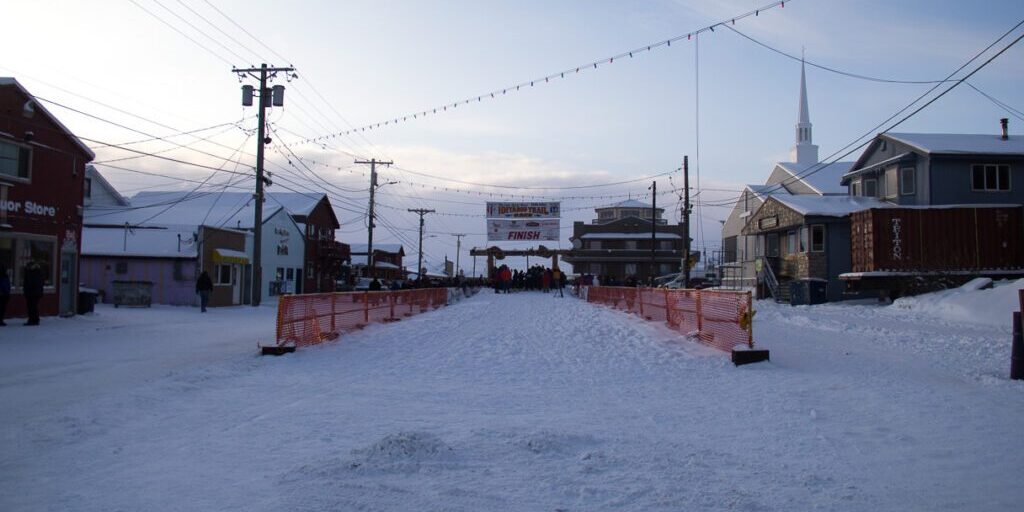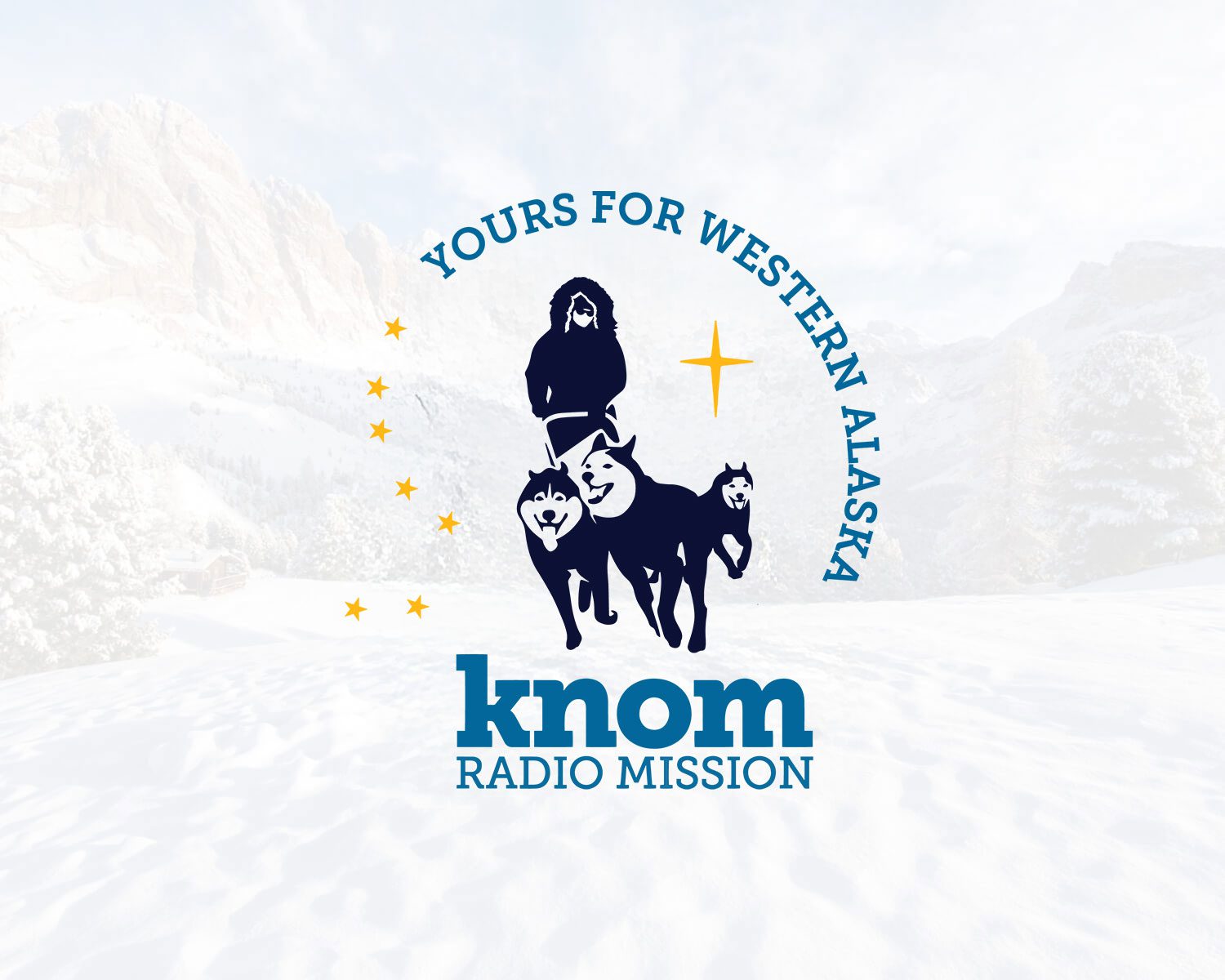Today was the day. The day I returned all the Iditarod books and documentaries that have been keeping us busy for the past three weeks. We have been in the Idita-zone for so long, now what? What is our purpose?! Our new joke is that we have no purpose. Iditarod is over- life is over. Not really, but really.
These past few weeks have been a flurry of excitement- Iditarod was everything they told us and more. We’d heard Iditarod was a pretty big deal, and the rumors weren’t just rumors. People from all over the world flocked not just to Nome, but to Anchorage and various checkpoints along the trail. Anna Rose taught me the easiest way to meet tourists is to offer to take their picture for them, and voila! An instant-in to talking to them. On a walk one day we ended up meeting a couple from England and a trio from Australia and New Zealand. Those from the Arctic regions and Asia, fellow Alaskans and lower-48ers unite! The gang was all here.

Each of us was assigned a different update time, held at 9am, noon, and 5pm. We had done updates during the Iron Dog snowmachine race, which ended up being extremely helpful in prepping us for Iditarod. However we soon realized it was quite a different race. While snowmachines trek across the tundra at 30+ miles per hour, dogsleds move an average 7 miles per hour, peaking at around 10.

We kept up with race, trail, and weather conditions using multiple sources- Alaska Dispatch, Anchorage Daily News, the Juneau Empire, Alaska Regional Headquarters- but our main source of information was Iditarod Insider through Iditarod.com. It didn’t take long to become extremely familiar with the site, as it provided everything from race standings, musher profiles, photos and videos, the latest press releases, blogs from former mushers who were on the trail, and much more.

The coolest part was the GPS tracking system. Each musher had a tracking device on them, and so we were able to follow the race in almost real time. The mushers constantly bunny-hopped each other checkpoint to checkpoint, and it was unclear who was actually leading until they all took their mandatory layovers. Even then it was an extremely close race, with the slated winner scratching just hours before the first mushers made it to Nome.

The trail this year was treacherous, with many mushers getting hurt along the way. The dogs were handling it just fine, actually more than fine- really well- in comparison to their two-legged counterparts. They are used to running on both snowy and bare surfaces. Mushers train on both terrains, but they use 4-wheelers in the summer season and sleds in the winter. This abnormal winter caused a lack of snow on some parts of the trail, and the rocky, gravely, jagged landscape tore apart many sleds.

Once the mushers started coming in, we moved to our 24-hour schedule. Each with 12-hour shifts and different obligations, from spotting to working the board to interviewing at the finish line, we were to keep Western Alaska informed on the top 20 mushers into Nome. This began a little earlier than we anticipated, with records being broken during this hard and fast race.

Daynee and I had the privilege of spotting the first teams in. Now let me define… Spotting: positioning oneself approximately 3 miles outside of Nome, watching the trail, and reporting back to the station when said musher is at certain points; these being the crossing at Fort Davis, Swanberg Dredge, K-Street, and up the ramp onto Front Street en route to the chute/burled arch/finish line.

Now, we didn’t sit out there the entire time waiting. Thanks to the GPS, we were able to see when the mushers left the last checkpoint and the approximate speed they were moving at. Depending on their relation to Cape Nome, we would then go out and, well, spot. In the daylight this proved a bit easier, as we could visibly see the mushers. Darkness proved more challenging however, as we would have to look for the musher’s headlamps in the black of the night. These would frequently be confused with snowmachine and car lights at a distance, so we had to be extremely alert even in the wee hours of the morning.

At roughly 4am Monday morning, we went out uncertain who would be first in. Aliy Zirkle is a Nome favorite who had a good lead, but Jeff King had a strong team that passed her and it seemed he would take the win. Articles were already being written, like the one from Alaska Dispatch: “Would Fifth Victory Crown Jeff King as the Greatest Iditarod Musher Ever?” Then we see on the race standings… Jeff King scratched!! No way!!! We all couldn’t believe it. Aliy’s got this!

Daynee and I out there, anxiously awaiting who it will be. Dallas Seavey had ended up passing Aliy at the final Safety checkpoint, and the GPS showed they were neck and neck. Dallas however, came to have a commanding lead that Aliy could not rival. Under the burled arch, Dallas didn’t even know he won! He thought his father Mitch was behind him (the Seavey’s are well-known racing family; Mitch won last year, Dallas again the year before, and younger brother Conway won the Junior Iditarod this year), and Jeff King and Aliy had gone on to take the top two positions. He was unaware he was, in fact, the winner.

That wasn’t the only close call we saw. Katherine Keith was not in the top 20, however we covered all Western Alaskan mushers no matter their placing, so Daynee and I went out Wednesday morning to cover her finish. While we were cheering her on near Swanberg Dredge, we didn’t even see that Dan Kaduce had come up from behind and was right on her tail! We watched her continue to push, but her trotting team of eight was no match for Kaduce’s swifter team of eleven. (Side-note for those not well Idita-quainted: teams start out with sixteen dogs, and drop dogs at different checkpoints along the route for different reasons, whether the dog is injured or worn out or not keeping up with the pack. It is actually easier for mushers to manage smaller teams as they work their way to the finish, saving time on chores- meals and snacks and rest and massage and application of paw ointment).

Watching the mushers run in was beautiful and amazing; to see them arriving after roughly 1,000 miles of being on the trail, days upon days of movement, such a lack of sleep and raw endurance getting here; it’s incredible. I give them so much credit for what they do, this official sport of Alaska. Dog mushing is not just a 2-3 hour game on a court or field or ice. It is a long journey across many miles of land, whether it is a distance run like the Iditarod or Yukon Quest, mid-distance like the Kobuk 440 or Kuskokwin 300, or a sprint. It is a team effort between musher and dogs, an adventure like no other that only a handful will ever experience in a lifetime. Which is appropriate, for so is Alaska.






